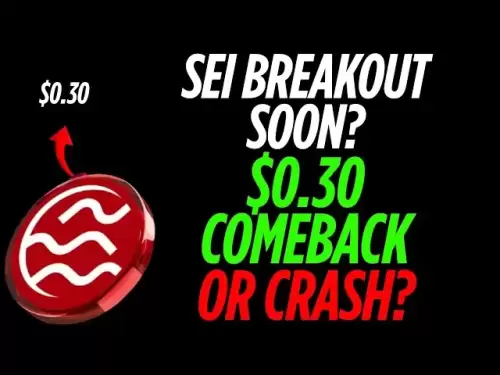-
 Bitcoin
Bitcoin $109,583.2239
0.19% -
 Ethereum
Ethereum $2,583.4612
0.48% -
 Tether USDt
Tether USDt $1.0003
-0.04% -
 XRP
XRP $2.2681
0.70% -
 BNB
BNB $659.9218
-0.52% -
 Solana
Solana $151.4961
-0.37% -
 USDC
USDC $0.9999
-0.02% -
 TRON
TRON $0.2861
1.20% -
 Dogecoin
Dogecoin $0.1718
0.04% -
 Cardano
Cardano $0.5960
-0.07% -
 Hyperliquid
Hyperliquid $40.1233
2.85% -
 Sui
Sui $2.9974
2.48% -
 Bitcoin Cash
Bitcoin Cash $497.1279
-1.76% -
 Chainlink
Chainlink $13.7275
-0.22% -
 UNUS SED LEO
UNUS SED LEO $9.0241
0.70% -
 Avalanche
Avalanche $18.5536
-0.88% -
 Stellar
Stellar $0.2421
1.39% -
 Toncoin
Toncoin $2.8593
-0.51% -
 Shiba Inu
Shiba Inu $0.0...01187
-0.07% -
 Litecoin
Litecoin $90.0023
2.90% -
 Hedera
Hedera $0.1590
2.79% -
 Monero
Monero $322.1495
0.00% -
 Polkadot
Polkadot $3.5453
-1.00% -
 Dai
Dai $1.0000
-0.01% -
 Bitget Token
Bitget Token $4.5733
-1.06% -
 Ethena USDe
Ethena USDe $1.0002
-0.01% -
 Uniswap
Uniswap $7.6345
3.03% -
 Aave
Aave $279.2583
0.47% -
 Pepe
Pepe $0.0...01003
-1.52% -
 Pi
Pi $0.4941
-0.32%
How does Bitcoincoin's inflation rate work?
Dogecoin's inflationary model, with a 4.3% annual supply increase and no hard cap, promotes spending over hoarding, distinguishing it from deflationary cryptocurrencies like Bitcoin.
Jul 03, 2025 at 06:43 pm
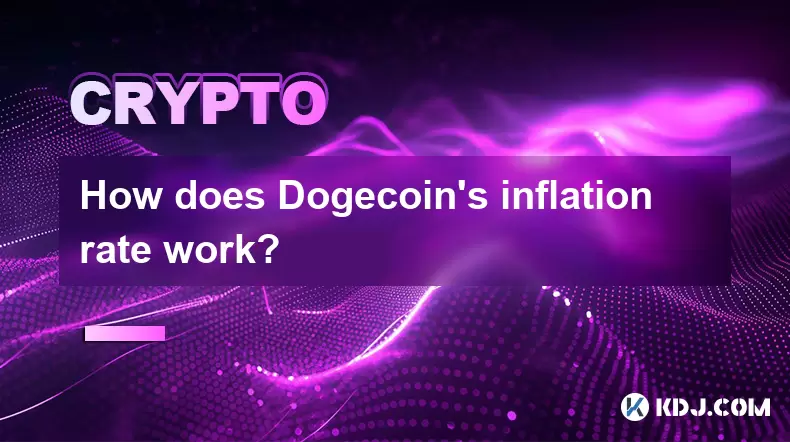
Understanding Dogecoin's Inflationary Model
Dogecoin (DOGE) is unique among cryptocurrencies due to its inflationary supply model, which sets it apart from deflationary assets like Bitcoin. Unlike Bitcoin, which has a capped supply of 21 million coins, Dogecoin does not have a maximum supply limit. This means that new DOGE coins are continuously created through mining, contributing to an ongoing increase in the total supply.
The annual inflation rate of Dogecoin is approximately 4.3%, although this percentage can vary slightly depending on network activity and block times. This steady issuance of new coins ensures that there will always be new DOGE entering circulation, which affects how the cryptocurrency functions economically compared to other digital assets.
Mechanics Behind Dogecoin’s Block Rewards
The block reward system is central to understanding how Dogecoin’s inflation rate is maintained. Every time a new block is mined on the Dogecoin blockchain, miners receive a reward in DOGE. Originally, Dogecoin had a variable block reward system, but over time, it transitioned to a fixed reward structure to stabilize the rate at which new coins enter the market.
Currently, each mined block generates 10,000 DOGE. With blocks being mined roughly every minute, this leads to about 5.256 billion new DOGE coins being added to the supply annually. As of now, the circulating supply exceeds 130 billion DOGE, and with no cap, the total supply will continue to grow indefinitely.
This mechanism ensures that miners remain incentivized to secure the network even as time progresses. Without a hard cap, the continuous reward encourages long-term participation in the network, maintaining decentralization and security.
Comparison with Other Cryptocurrencies
When comparing Dogecoin to other major cryptocurrencies, especially those with deflationary models, the differences become apparent. For instance, Bitcoin halves its block reward approximately every four years, reducing the rate of new supply creation until it eventually reaches zero. Ethereum has implemented mechanisms to reduce issuance and even burn some tokens, creating a net deflationary effect under certain conditions.
In contrast, Dogecoin maintains a constant annual inflation rate, which prevents scarcity-driven value increases. This makes DOGE more suitable for frequent transactions and tipping rather than long-term store-of-value purposes. The predictable issuance schedule also provides transparency for users and investors regarding future supply growth.
Economic Implications of Dogecoin’s Inflation
The ongoing inflation of Dogecoin has several economic implications. One key impact is reduced scarcity, which can influence price dynamics. Since more DOGE will always be available, holders may experience dilution over time, especially if demand doesn't keep pace with supply growth.
However, this inflationary nature also serves a purpose. It discourages large-scale hoarding and promotes active usage within the ecosystem. Communities around social media platforms and online forums often use DOGE for microtransactions, tips, and small rewards — uses that benefit from a currency that remains accessible and abundant.
Another important aspect is transaction fees. On the Dogecoin network, fees are typically very low, making it cost-effective for small transfers. While inflation could theoretically devalue the currency over time, the low barrier to entry and ease of use help maintain its relevance in specific niches.
Factors Influencing Dogecoin’s Market Behavior
Despite its inflationary model, Dogecoin’s market behavior isn’t solely determined by supply dynamics. External factors such as market sentiment, celebrity endorsements, and macroeconomic trends play significant roles in influencing its price and adoption.
For example, Elon Musk’s tweets have historically caused sharp fluctuations in DOGE’s value. Social media trends, community-driven campaigns, and viral events also contribute to short-term volatility. These factors often outweigh the fundamental aspects of Dogecoin’s supply model, leading to price movements that don’t always align with traditional economic expectations.
Additionally, exchange listings, wallet integrations, and merchant adoption can affect how widely DOGE is used and perceived. Even though inflation continues unabated, real-world utility and speculative interest can drive demand independently of supply concerns.
Frequently Asked Questions
- Why doesn’t Dogecoin have a maximum supply?
Dogecoin was originally created as a joke or parody cryptocurrency, intended to be fun and accessible rather than a serious investment. Its developers chose not to implement a maximum supply to encourage spending rather than hoarding.
Can Dogecoin’s inflation rate change?
The inflation rate is tied directly to the block reward and block time. While the block reward is currently fixed at 10,000 DOGE per block, any protocol-level changes would require a consensus upgrade or fork, which is unlikely without broad community support. How does Dogecoin’s inflation compare to fiat currencies?
Many fiat currencies, like the U.S. dollar, also experience inflation due to central bank policies. However, unlike fiat, Dogecoin’s inflation rate is transparent, predictable, and not subject to arbitrary policy changes by centralized institutions. Is Dogecoin a good long-term investment considering its inflation?
Due to its inflationary nature, Dogecoin is generally considered less suitable as a long-term store of value compared to scarce assets like Bitcoin. However, some investors believe in its cultural significance and potential for short-term gains driven by social trends. Disclaimer:info@kdj.com
The information provided is not trading advice. kdj.com does not assume any responsibility for any investments made based on the information provided in this article. Cryptocurrencies are highly volatile and it is highly recommended that you invest with caution after thorough research!
If you believe that the content used on this website infringes your copyright, please contact us immediately (info@kdj.com) and we will delete it promptly.
- Coinbase, Wormhole, and the Crypto Exchange Evolution: What's the Deal?
- 2025-07-04 06:50:12
- Dogwifhat (WIF) Price Surge: Meme Coin Mania or Something More?
- 2025-07-04 06:30:13
- Celestia (TIA) Price: Breakout or Breakdown? Decoding the TIA Breakout Pattern
- 2025-07-04 06:50:12
- Nano Labs, BNB, and a $1B War Chest: A Bold Crypto Play
- 2025-07-04 06:30:13
- BlackRock's IBIT ETF: Climbing the Revenue Ranks and Shaking Up Wall Street
- 2025-07-04 06:35:13
- Ethereum, the US Economy, and Tariffs: Decoding the Interwoven Threads
- 2025-07-04 06:55:13
Related knowledge

How does Bitcoincoin's inflation rate work?
Jul 03,2025 at 06:43pm
Understanding Dogecoin's Inflationary ModelDogecoin (DOGE) is unique among cryptocurrencies due to its inflationary supply model, which sets it apart from deflationary assets like Bitcoin. Unlike Bitcoin, which has a capped supply of 21 million coins, Dogecoin does not have a maximum supply limit. This means that new DOGE coins are continuously created ...

How to buy Dogecoin with a credit card?
Jul 03,2025 at 11:35am
Understanding Dogecoin and Its PopularityDogecoin (DOGE) started as a joke in 2013 but has since become one of the most recognizable cryptocurrencies. Its meme-based branding, featuring the Shiba Inu dog, has attracted a large community and even endorsements from high-profile individuals like Elon Musk. Despite its humorous origins, Dogecoin is now trea...
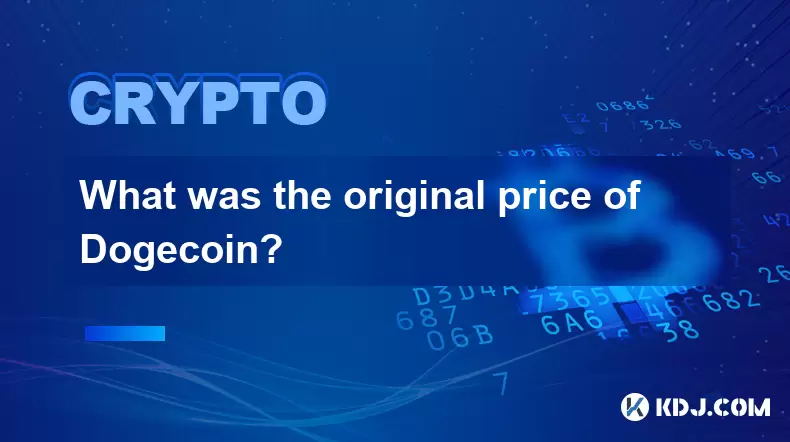
What was the original price of Bitcoincoin?
Jul 03,2025 at 04:43pm
Understanding the Genesis of DogecoinDogecoin (DOGE) was created in December 2013 by software engineers Billy Markus and Jackson Palmer as a lighthearted parody of the serious nature of cryptocurrencies at the time. Despite its humorous origins, it quickly gained traction within online communities, particularly on platforms like Reddit and Twitter. The ...
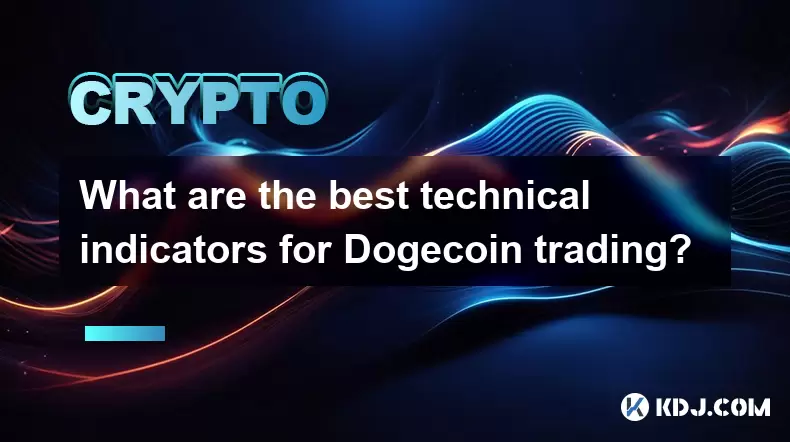
What are the best technical indicators for Dogecoin trading?
Jul 03,2025 at 01:07pm
Understanding Technical Indicators in Cryptocurrency TradingTechnical indicators are mathematical calculations based on historical price, volume, or open interest data used to forecast future price movements. In the Dogecoin trading environment, these tools help traders identify trends, reversals, and potential entry or exit points. Since Dogecoin is kn...
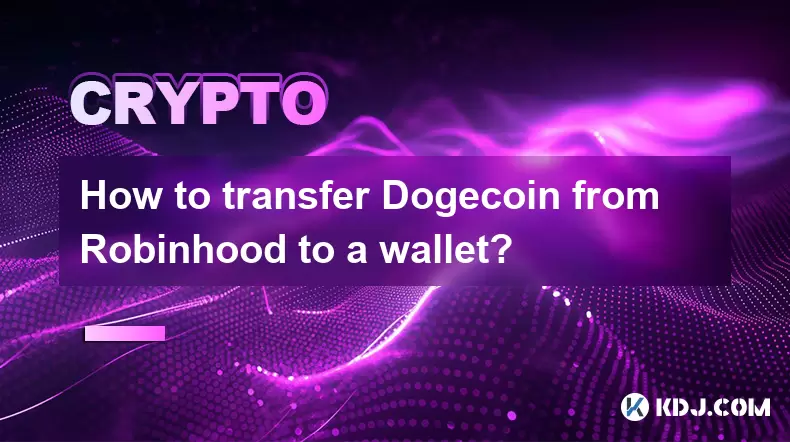
How to transfer Bitcoincoin from Robinhood to a wallet?
Jul 03,2025 at 08:01pm
Understanding Dogecoin and RobinhoodDogecoin (DOGE) is a popular cryptocurrency that started as a meme but has gained significant traction in the crypto market. Robinhood, on the other hand, is a financial services platform known for its zero-commission trading model, which also allows users to buy and sell cryptocurrencies like Dogecoin. However, Robin...
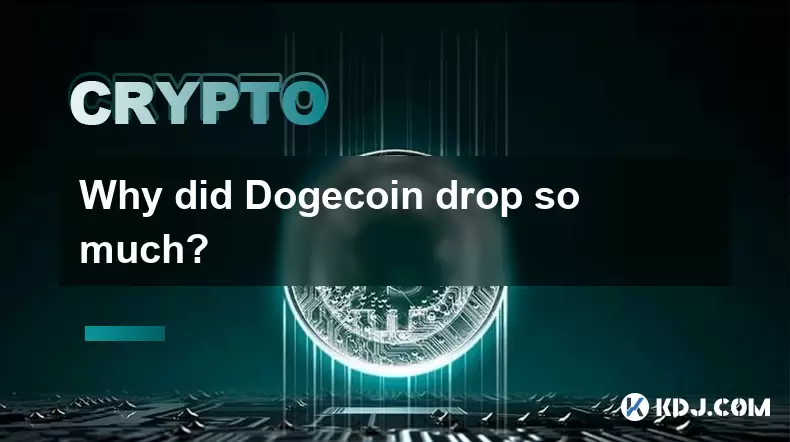
Why did Bitcoincoin drop so much?
Jul 03,2025 at 08:56pm
Market Sentiment and Investor BehaviorThe significant drop in Dogecoin's price can be partially attributed to shifts in market sentiment and changes in investor behavior. As a meme-based cryptocurrency, Dogecoin lacks the strong underlying technology or real-world use cases that many other digital assets possess. This makes its value highly speculative ...

How does Bitcoincoin's inflation rate work?
Jul 03,2025 at 06:43pm
Understanding Dogecoin's Inflationary ModelDogecoin (DOGE) is unique among cryptocurrencies due to its inflationary supply model, which sets it apart from deflationary assets like Bitcoin. Unlike Bitcoin, which has a capped supply of 21 million coins, Dogecoin does not have a maximum supply limit. This means that new DOGE coins are continuously created ...

How to buy Dogecoin with a credit card?
Jul 03,2025 at 11:35am
Understanding Dogecoin and Its PopularityDogecoin (DOGE) started as a joke in 2013 but has since become one of the most recognizable cryptocurrencies. Its meme-based branding, featuring the Shiba Inu dog, has attracted a large community and even endorsements from high-profile individuals like Elon Musk. Despite its humorous origins, Dogecoin is now trea...

What was the original price of Bitcoincoin?
Jul 03,2025 at 04:43pm
Understanding the Genesis of DogecoinDogecoin (DOGE) was created in December 2013 by software engineers Billy Markus and Jackson Palmer as a lighthearted parody of the serious nature of cryptocurrencies at the time. Despite its humorous origins, it quickly gained traction within online communities, particularly on platforms like Reddit and Twitter. The ...

What are the best technical indicators for Dogecoin trading?
Jul 03,2025 at 01:07pm
Understanding Technical Indicators in Cryptocurrency TradingTechnical indicators are mathematical calculations based on historical price, volume, or open interest data used to forecast future price movements. In the Dogecoin trading environment, these tools help traders identify trends, reversals, and potential entry or exit points. Since Dogecoin is kn...

How to transfer Bitcoincoin from Robinhood to a wallet?
Jul 03,2025 at 08:01pm
Understanding Dogecoin and RobinhoodDogecoin (DOGE) is a popular cryptocurrency that started as a meme but has gained significant traction in the crypto market. Robinhood, on the other hand, is a financial services platform known for its zero-commission trading model, which also allows users to buy and sell cryptocurrencies like Dogecoin. However, Robin...

Why did Bitcoincoin drop so much?
Jul 03,2025 at 08:56pm
Market Sentiment and Investor BehaviorThe significant drop in Dogecoin's price can be partially attributed to shifts in market sentiment and changes in investor behavior. As a meme-based cryptocurrency, Dogecoin lacks the strong underlying technology or real-world use cases that many other digital assets possess. This makes its value highly speculative ...
See all articles























